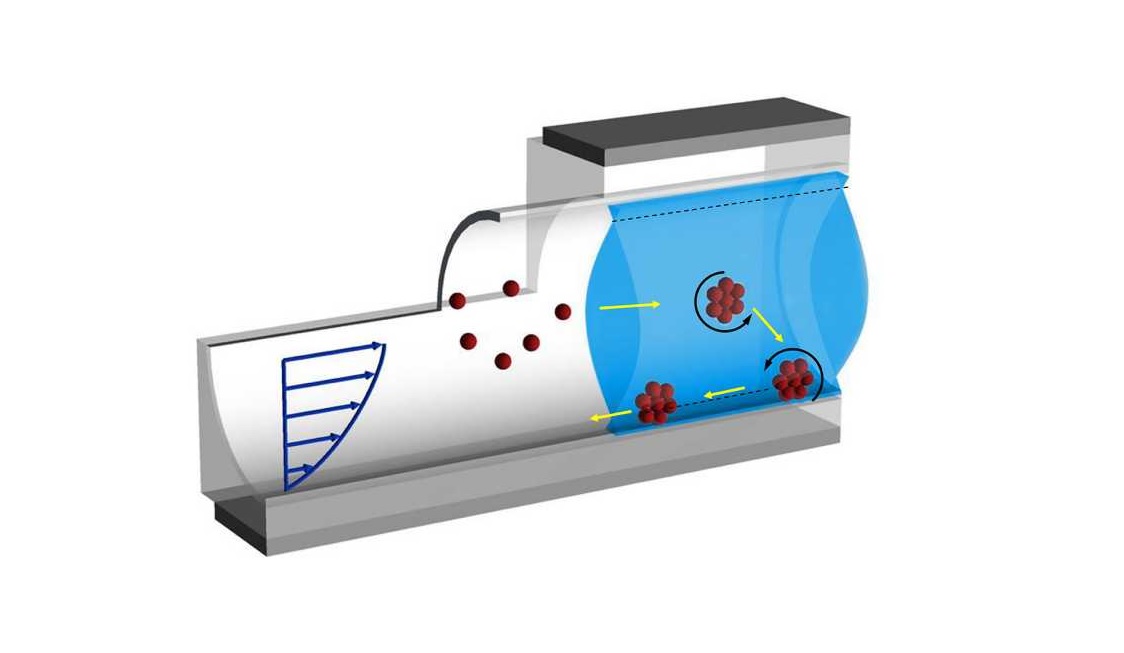Tokyo (SCCIJ) – Researchers in Switzerland have developed micro-vehicles that are small enough to navigate blood vessels. Ultrasound propels the miniature submarines; even upstream movement is possible. This technology may revolutionize medicine. Tiny vehicles navigating blood vessels would enable physicians to take biopsies, insert stents and deliver drugs with precision to sites that are difficult to reach, all from inside the body.

A self-assembled micro swarm (in red) can swim against the blood flow along a capillary wall (Visualization: Ahmed et al. Nature Machine Intelligence 2021).
Experiment with beads
Scientists around the world are currently researching and developing suitable micro-vehicles. In most cases, they are powered and controlled by acoustic and magnetic fields or using light. However, propelling micro-vehicles against a fluid flow had proved to be a major challenge because they need to be able to navigate in blood vessels against the direction of blood flow. Now, researchers at ETH Zurich have developed micro-vehicles that are manipulated by an external field and can swim against the flow.
In their lab experiment, the research team headed by Daniel Ahmed and Bradley Nelson, professors at the Department of Mechanical and Process Engineering, used magnetic beads made of iron oxide and a polymer with a diameter of 3 micrometers. A magnetic field induces these particles to cluster into a swarm with a diameter of between 15 and 40 micrometers. The scientists studied the behavior of this swarm in a thin glass tube with liquid flowing through it. The glass tubes had a diameter of 150 to 300 micrometers, a similar size to the blood vessels in a tumor.
Microsurgery as application
To propel the micro swarm against the flow in the tube, the ETH researchers applied the same trick canoeists use on a river: they hug the riverbank to paddle upstream because the friction of the bank makes the current slower there than in the middle of the river. Using ultrasound at a specific frequency, the scientists first guided the cluster of microbeads close to the wall of the tube.
Then the researchers switched to a rotating magnetic field to propel the swarm against the flow. As their next step, the researchers intend to investigate how the micro-vehicles respond in the blood vessels of animals. “As both ultrasound waves and magnetic fields penetrate body tissue, our method is ideal for controlling micro-vehicles inside the body,” says ETH Professor Ahmed.
Microsurgery, such as unclogging blocked blood vessels, is one of the future applications the researchers hope this method will serve. Moreover, the micro-vehicles could one day be used to deliver cancer drugs to tumors via the blood vessels and release them directly into the tumor tissue. Lastly, another area of application is transferring drugs from blood vessels into the tissues of the brain.
Text: © ETHZ/Fabio Bergamin (edited by Martin Fritz for SCCIJ)





























